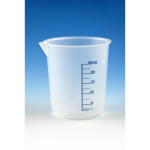Application
Useful for the study of enzyme kinetics, screening inhibitors, and selectivity profiling.
Biochem/physiol Actions
Acetyl-CoA Carboxylase (ACC) regulates the metabolism of fatty acids. This enzyme catalzes the formation of Malonyl CoA through the irreversible carboxylation of acetyl CoA. There are two main isoforms of Acetyl-CoA carboxylase expressed in mammals, Acetyl-CoA carboxylase 1 (ACACA) and Acetyl-CoA carboxylase 2 (ACACB). ACACA has broad tissue distribution but is enriched in tissues critical for fatty acid sythesis such as adipose tissue. ACACB is enriched in tissues such as skeletal muscle and heart that are critical for fatty acid oxidation. The Acetyl-CoA Carboxylase enzymes are activated by citrate, glutamate, and dicarboxylic acids and negatively regulated by long and short chain fatty acyl CoAs. Acetyl-CoA Carboxylase 1 is essential for breast cancer and prostrate cancer cell survival. Because of thier roles in fatty acid metabolism and oxidation, ACACA and ACACB are therapeutic targets for treating obesity and metabolic syndrome disorders.
General description
Acetyl-CoA Carboxylase 1 (ACACA) is mapped to human chromosome 17q12. It is majorly expressed in liver and adipose tissue. ACACA has biotin carboxylase (BC), biotin carboxyl carrier protein (BCCP) and carboxyl transferase (CT) domains and an additional interaction domain. (BT) A central domain region (CD) connects the BC and CT domains. ACACA is a key regulator of energy balance. The ACACA catalysis is the rate-limiting step in the synthesis of malonyl-CoA and regulation of free fatty acid oxidation. Elevated levels of ACACA contributes to obesity and tumor progression.
Formulation: Solution in Tris-HCl (pH 8), NaCl, Glycerol
Physical properties
α transcript variant 1, C-terminal histidine-tagged 270 kDa protein containing amino acids 1-2383 (end)
Preparation Note
Thaw on ice. Upon first thaw, briefly spin tube containing enzyme to recover full content of the tube. Aliquot enzyme into single use aliquots. Store remaining undiluted enzyme in aliquots at -70°C. Note: Enzyme is very sensitive to freeze/thaw cycles.
Unit Definition
One unit will cause the conversion of 1 picomole of ATP to ADP per minute at pH 7.4 at 30 °C











